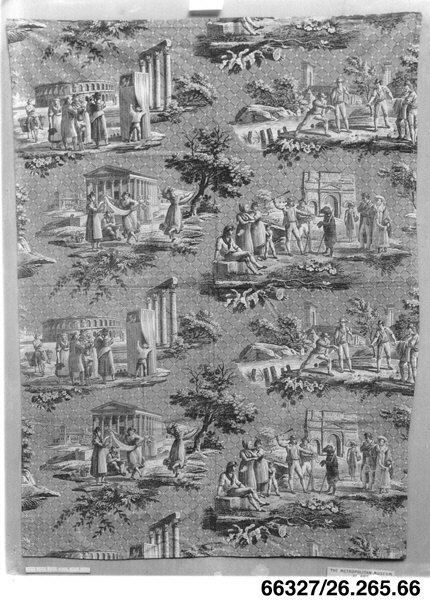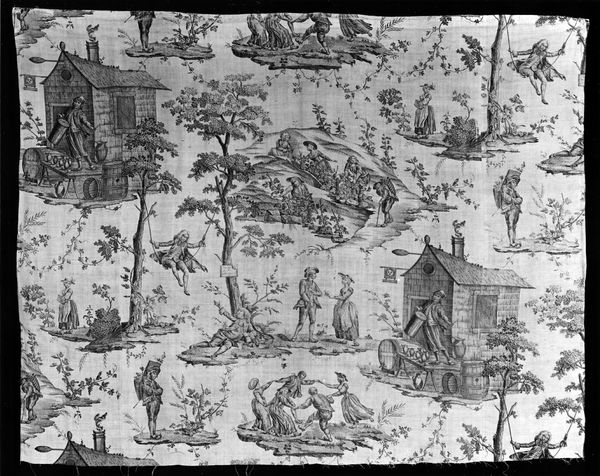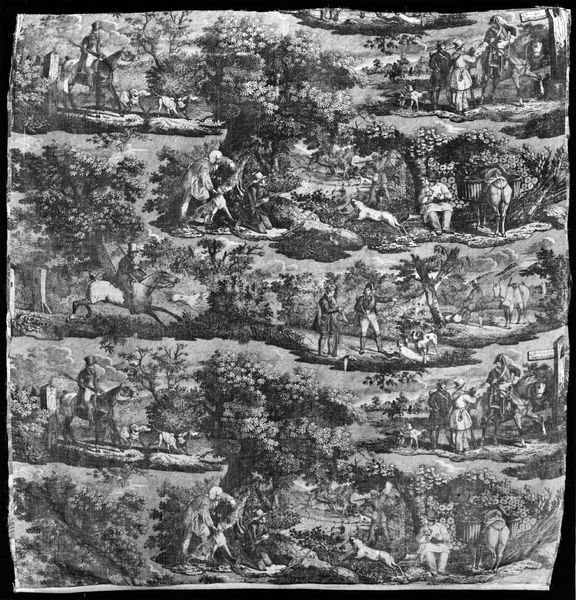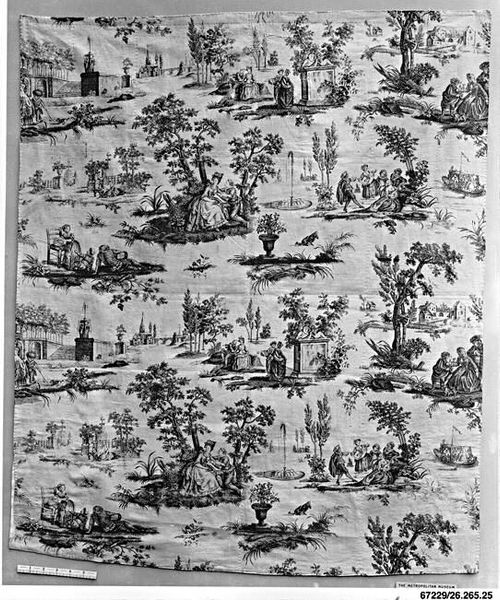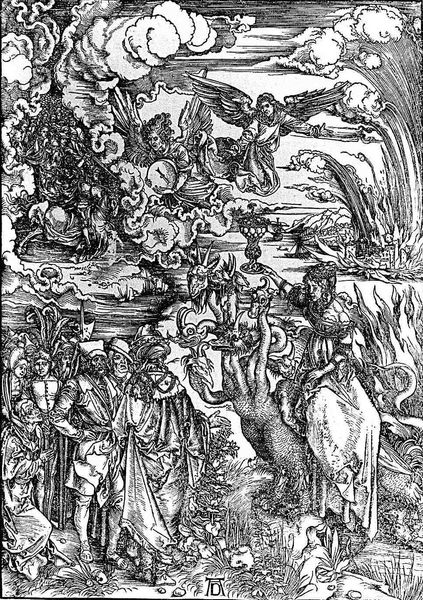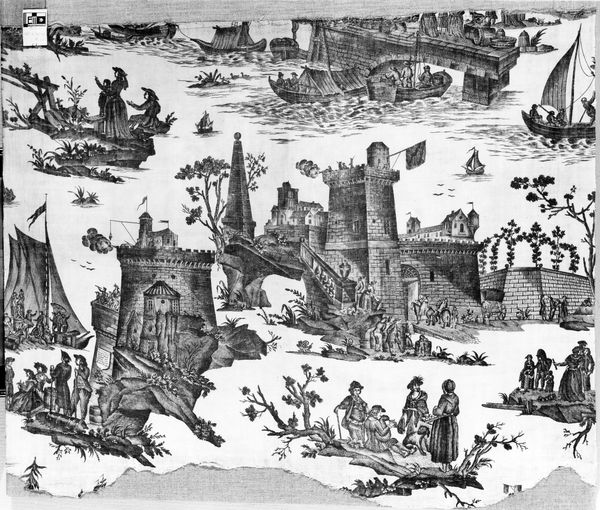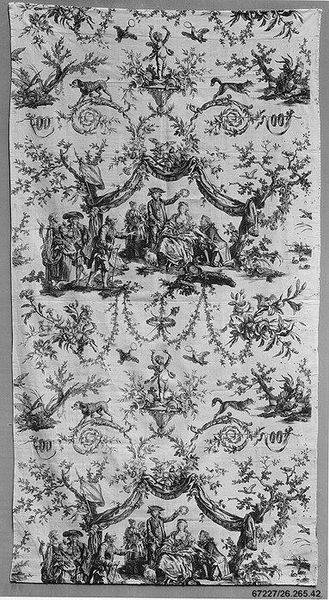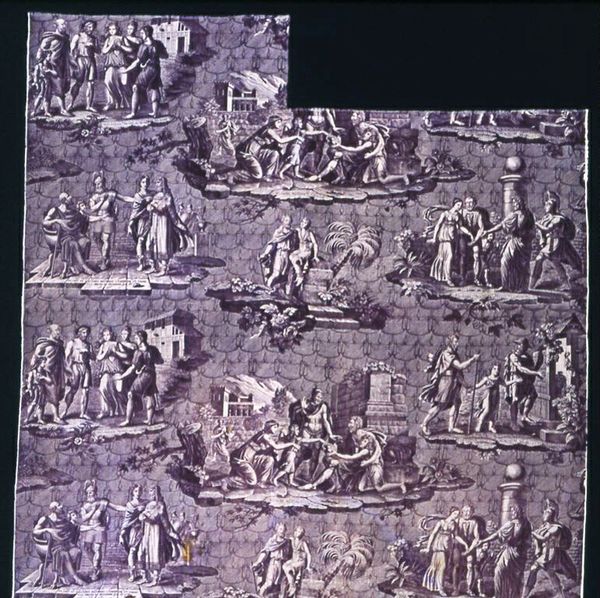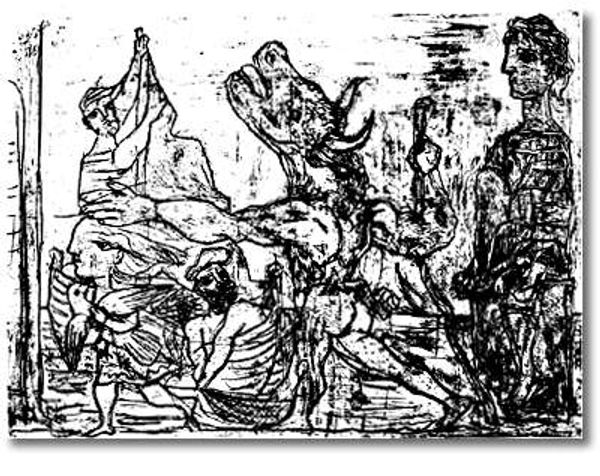
La Route de St. Cloud ou de Poissy (Furnishing Fabric) after 1822
0:00
0:00
print, weaving, textile, engraving
#
narrative-art
#
comic strip
# print
#
weaving
#
textile
#
romanticism
#
genre-painting
#
engraving
#
comic
Dimensions: 85.1 × 80.5 cm (33 1/2 × 31 5/8 in.) Warp repeat: 46.9 cm (18 1/2 in.)
Copyright: Public Domain
Editor: So, here we have "La Route de St. Cloud ou de Poissy (Furnishing Fabric)" made after 1822 by Carle Vernet. It's currently at the Art Institute of Chicago, and looks like it's a textile print. I’m struck by how it resembles a comic strip, repeating scenes from what looks like a journey. What do you see in this piece? Curator: From a materialist perspective, I’m fascinated by its function as furnishing fabric. This places it squarely within the realm of consumption and the everyday. Think about it: this wasn’t intended as high art to be passively admired. Instead, it's designed for active engagement, influencing the ambiance of domestic space, possibly mass-produced. Editor: That’s a really interesting point – I hadn’t considered its practical purpose. It definitely changes my perception, viewing it as an object meant for the everyday, instead of something displayed on a wall. Curator: Exactly! Furthermore, the production process interests me. How was this design transferred onto fabric? Was it a laborious, handcrafted endeavor or did industrial techniques streamline the process? Investigating the production of this piece can reveal socio-economic aspects of the era, and expose who would have made or bought it. Editor: So, the materials used and the methods of production reflect broader social and economic realities of the time? Curator: Precisely. The fabric and printing techniques used, the subject matter depicted, and its ultimate use, give a detailed account of the society, its values, and the prevailing means of production. These choices reveal as much as – if not more than – any supposed artistic intention. Editor: That gives me a whole new way of looking at art – examining it not just for its aesthetic value, but for what it tells us about the world it came from and how it was produced! Thanks. Curator: Indeed, it’s through the materiality of art that we gain a grounded understanding of its historical and cultural significance.
Comments
No comments
Be the first to comment and join the conversation on the ultimate creative platform.



